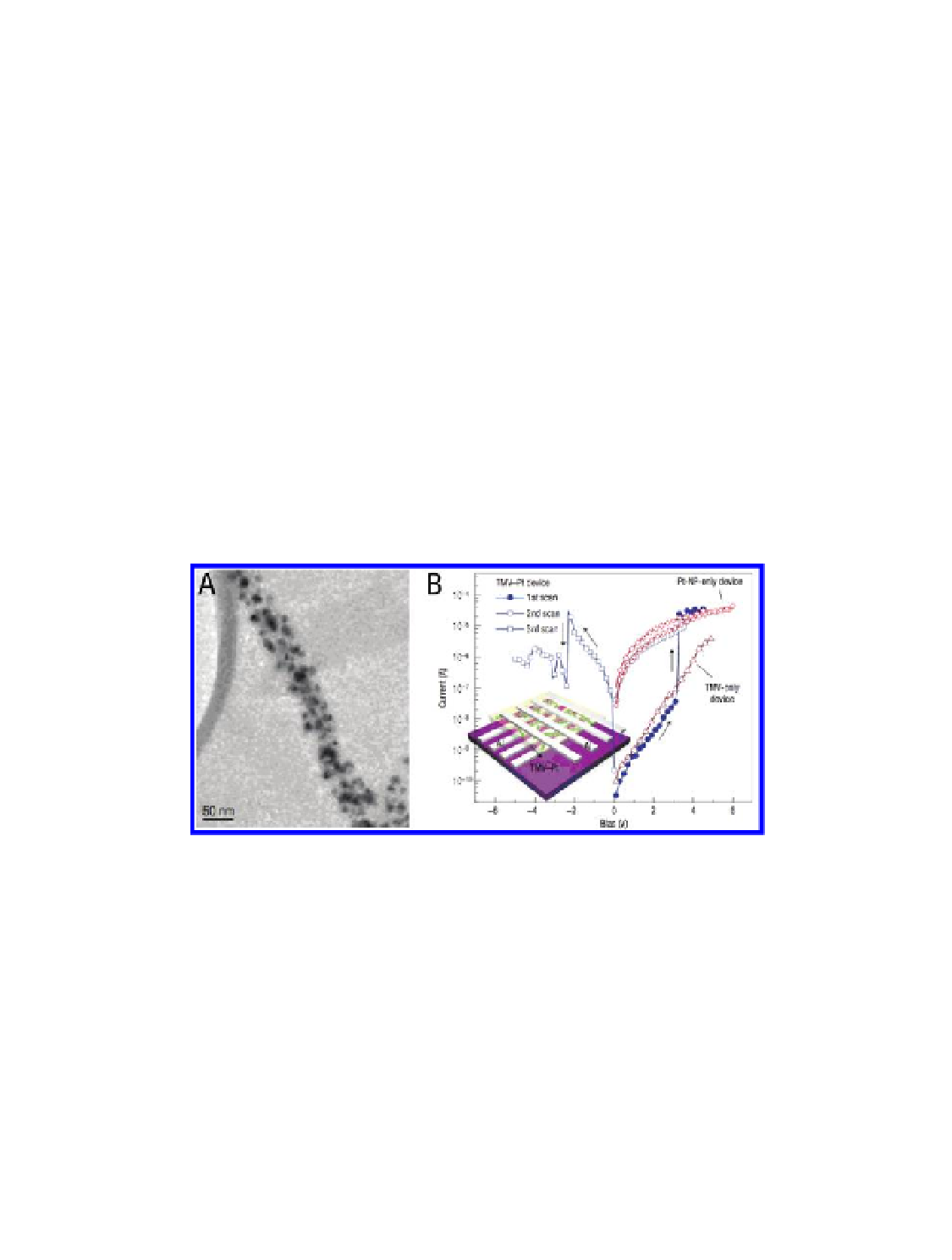Biology Reference
In-Depth Information
Initially, the current gradually increases (low-conductance state), upon
reaching a turn-on bias, the current increases by more than three orders of
magnitude (high-conductance state) (Fig. 6.9b). The low-conductance state
can be termed as OFF state whereas the high-conductance state is referred to
as ON state. The OFF and ON states can also be denoted as '0' and '1' (to refer
to typical data storage terminology) respectively. The system can be switched
between OFF and ON (or '0' and '1'). Control experiments were conducted
with devices containing Pt or TMV only; however, electrical bistability
switching could not be observed, demonstrating that the alignment of the Pt
on the TMV bioscaffold is required.
Conductive atomic force microscopy on single TMV-Pt structures
confirmed that each individual TMV-Pt wire shows the characteristic
switching effect. The device was found to be rewritable and programmable
for about 400 cycles. With increasing numbers of cycles, switching becomes
more difficult; this could be explained by potential degradation of the TMV
structure through Joule heating during programming of the device. Overall,
this TMV device can be regarded as a rewritable, non-volatile, 2-bit memory
storage device (Tseng
., 2006). Devices like this can be considered as
good candidates for next-generation technologies.
et al
Figure 6.9
(a) Transmission electron microscope (TEM) image of TMV-Pt conjugate.
The Pt nanoparticles have an average size of 10 nm and are uniformly attached
at the surface of the virus wire. (b) Typical room temperature current-volt (
)
characteristics of the TMV-Pt device. The first bias scan (filled circles) shows
that the device switches to the ON state at 3.1 V and stabilizes in the ON state, as
confirmed by the second scan (open circles). A reverse scan (squares) indicates
that the device turns back to the OFF state at 22.4 V. The
I
-
V
curves of TMV-only
(triangles) and Pt-NP-only (diamonds) devices show no conductance switching. The
inset shows a schematic of the device structure with an active layer of dispersed
TMV-Pt nanowires. Reproduced with permission from Tseng, R. J., Tsai, C., Ma, L.,
Ouyang, J., Ozkan, C. S., and Yang, Y. (2006). Digital memory device based on
I
-
V
Tobacco
mosaic virus
conjugated with nanoparticles,
Nat. Nano
,
1
, 72.


Search WWH ::

Custom Search